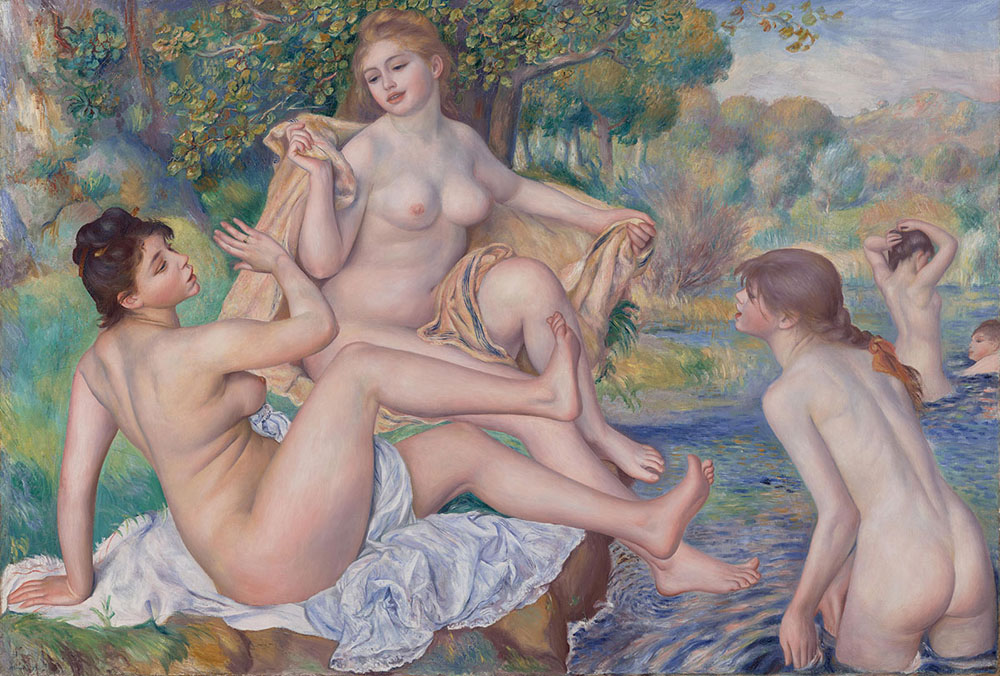Listen to director and curator Colin Bailey discuss one of Renoir’s most significant canvases and the process by which he developed it.

The Great Bathers was the centerpiece of Renoir’s submission to Georges Petit’s Exposition internationale, held between May 8 and June 8, 1887, in the dealer’s sumptuous Parisian galleries. Renoir likely began planning the work around 1884–85 and would later recall the process as one of “trial and error, and fresh starts.” Drawing inspiration from works by Raphael and the seventeenth-century French sculptor François Girardon, Renoir abandoned subjects of modern Parisian life in favor of a concentration on the female nude, “one of art’s indispensable forms,” as he noted to Berthe Morisot.
The Great Bathers, 1886–87
Oil on canvas
Philadelphia Museum of Art, The Mr. and Mrs. Carroll S. Tyson Jr. Collection, 19633; 1963-116-13
In the early 1880s Renoir grew dissatisfied with the spontaneous, improvisatory approach to painting that characterized Impressionism, feeling, as he later commented, that he no longer knew how to paint or to draw. He determined to develop new techniques with greater pictorial structure based on preparatory drawings, and he began, perhaps as early as 1884 or 1885, to envision an ambitious canvas of bathers that would exemplify his new approach. Several of the preliminary studies for this work have been reunited with the final painting for the first time in this exhibition. One of the earliest may be the sheet of watercolor studies on view on an adjacent wall that features multiple sketches of the reclining bather on the left. Renoir next made the large red, white, and black chalk drawing on view nearby in preparation for an oil painting on canvas, but decided to set that work aside. The large red chalk studies of one or two figures that you see on this wall followed, as Renoir continued to refine his composition, but he achieved its full realization only in the completed canvas. Here, the central bather’s gesture is resolved as she wraps herself in a large sheet rather than reaching upward or resting her hand on her knee as in the earlier sketches, and the landscape around the group is fully developed. This much labored-over work, inspired by the example of Italian Renaissance paintings by Raphael and by a seventeenth-century relief sculpture in the gardens of Versailles, presents a timeless image of an idyllic world centered on the female nude, without reference to the contemporary subjects that Renoir had previously favored.
